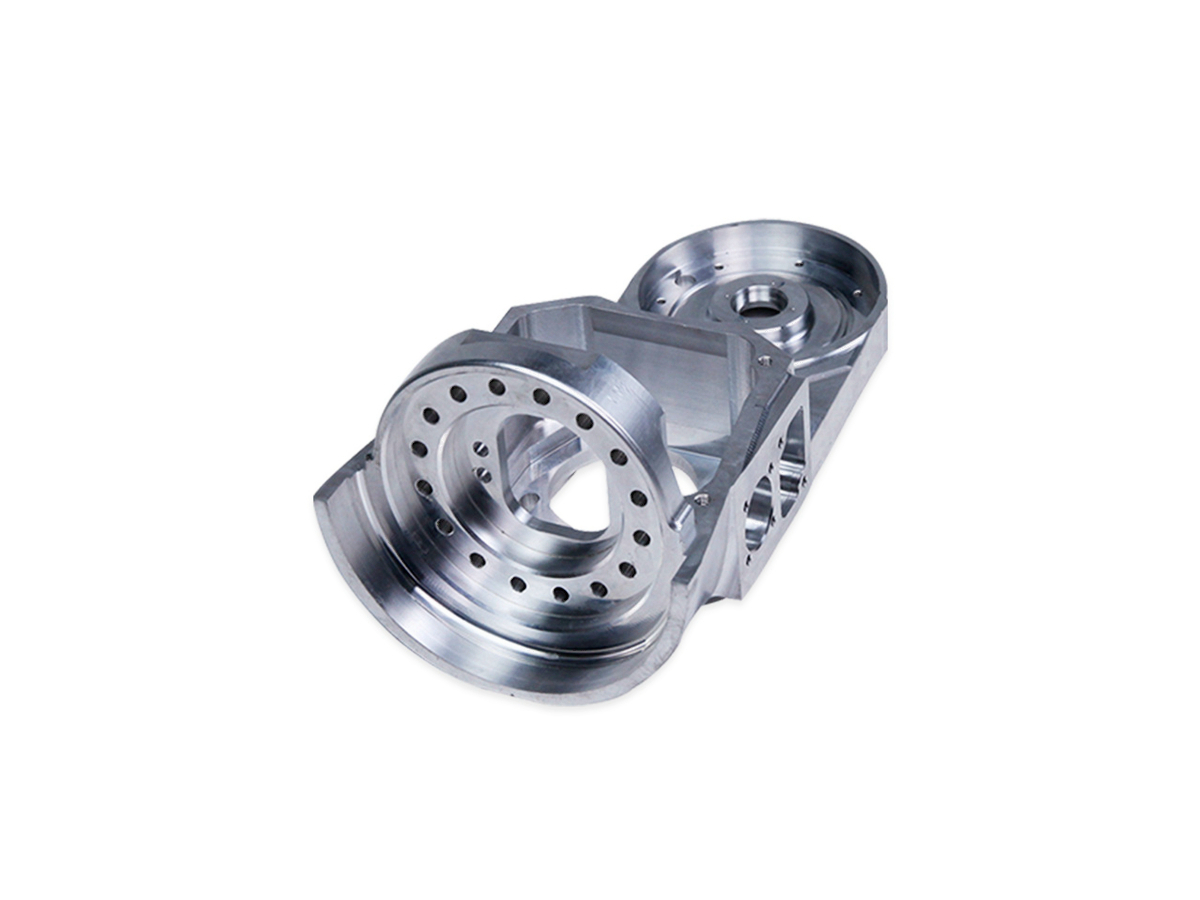High-Precision CNC Machining of 1045 Steel for Medium-Strength Components
Introduction to CNC Machining of 1045 Steel
Industries demanding medium-strength mechanical components often prefer 1045 steel due to its optimal balance of strength, machinability, toughness, and affordability. With a tensile strength ranging from 570 to 700 MPa and excellent machinability characteristics, 1045 steel is ideally suited for applications such as shafts, gears, bolts, connecting rods, and mechanical linkages across industries like industrial equipment, automotive, and agricultural machinery.
Utilizing state-of-the-art CNC machining technologies, manufacturers precisely produce 1045 steel components with tight dimensional tolerances, intricate features, and superior surface finishes. CNC machining ensures consistency, quality, and reliability essential for medium-strength mechanical applications.
Material Comparison of 1045 Steel for CNC Machined Components
Material Performance Comparison
Material | Tensile Strength (MPa) | Yield Strength (MPa) | Machinability | Typical Applications | Advantage |
|---|---|---|---|---|---|
570-700 | 310-450 | Very Good | Shafts, gears, connecting rods | Balanced strength, machinability | |
370-440 | 220-300 | Excellent | Low-strength mechanical parts | Superior machinability | |
650-1000 | 415-655 | Moderate | High-stress components, shafts | High strength, wear resistance | |
745-1080 | 470-835 | Moderate | Critical heavy-duty components | Exceptional toughness, strength |
Material Selection Strategy for CNC Machining of Medium-Strength Parts
Choosing the correct material for medium-strength mechanical components requires evaluating machinability, strength, toughness, and application-specific criteria:
Components like shafts, gears, bolts, and mechanical linkages requiring medium strength (570-700 MPa tensile) with very good machinability significantly benefit from 1045 steel, optimizing both cost-efficiency and reliable performance.
Less stressed parts and fittings prioritizing excellent machinability with moderate strength (370-440 MPa tensile) often select 1018 steel, ensuring economical production while meeting adequate strength requirements.
High-stress components, particularly shafts, and gears, requiring higher strength (650-1000 MPa tensile) and superior wear resistance frequently use 4140 steel, delivering enhanced performance in demanding operational environments.
Critical, heavy-duty applications such as aerospace and heavy machinery components needing exceptional toughness and strength (745-1080 MPa tensile) utilize 4340 steel, maximizing reliability under extreme conditions.
CNC Machining Process Analysis for 1045 Steel Components
CNC Machining Processes Performance Comparison
CNC Machining Technology | Dimensional Accuracy (mm) | Surface Roughness (Ra μm) | Typical Applications | Key Advantages |
|---|---|---|---|---|
±0.01-0.02 | 0.8-1.6 | Shafts, pins, cylindrical rods | Efficient, accurate cylindrical machining | |
±0.003-0.01 | 0.2-0.6 | Gears, connecting rods, brackets | Precise, complex geometry | |
±0.01-0.03 | 1.6-3.2 | Mounting holes, precision bores | Fast, reliable hole accuracy | |
±0.002-0.01 | 0.1-0.4 | Bearing surfaces, precision shafts | Exceptional precision, high surface quality |
CNC Machining Process Selection Strategy for Medium-Strength 1045 Steel Components
Selecting suitable CNC machining processes for 1045 steel components depends on complexity, dimensional precision, and specific functional requirements:
Shafts, cylindrical rods, pins, and simpler rotational parts requiring moderate accuracy (±0.01-0.02 mm) efficiently utilize CNC Turning, providing fast and consistent machining results.
Gears, connecting rods, brackets, and components with intricate geometries requiring higher accuracy (±0.003-0.01 mm) significantly benefit from Multi-Axis CNC Milling, ensuring precise and reliable production.
Components needing accurately placed mounting holes, precision bores, and drilled features with quick turnaround (±0.01-0.03 mm) utilize CNC Drilling, improving machining efficiency.
Precision shafts, bearing surfaces, and critical mating components demanding extremely tight tolerances (±0.002-0.01 mm) and superior surface finish (Ra ≤0.4 μm) employ CNC Grinding, optimizing performance and longevity.
Surface Treatment Solutions for CNC Machined 1045 Steel Components
Surface Treatment Performance Comparison
Treatment Method | Corrosion Resistance | Wear Resistance | Max Operating Temp (°C) | Typical Applications | Key Features |
|---|---|---|---|---|---|
Moderate (~500 hrs ASTM B117) | Moderate | Up to 150 | Shafts, gears, pins | Cost-effective corrosion protection | |
Excellent (~1200 hrs ASTM B117) | High | Up to 250 | Wear-resistant shafts, rods | Superior wear and corrosion resistance | |
Excellent (~1200 hrs ASTM B117) | Exceptional | Up to 550 | High-wear gears, mechanical linkages | Enhanced surface hardness, fatigue life | |
Very Good (~800 hrs ASTM B117) | Good | Up to 200 | Gears, connecting rods | Improved corrosion protection, lubricity |
Surface Treatment Selection Strategy for Medium-Strength 1045 Steel Components
Choosing surface treatments for 1045 steel medium-strength components involves considerations of corrosion resistance, wear resistance, and operational requirements:
Shafts, pins, and basic gears requiring cost-effective, moderate corrosion protection frequently use Black Oxide Coating, providing aesthetic appeal and adequate protection.
Wear-resistant shafts and rods benefit significantly from Hard Chrome Plating, enhancing corrosion and wear resistance.
High-wear gears and mechanical linkages operating under severe stress and friction benefit from Nitriding, achieving superior surface hardness, fatigue resistance, and durability.
Gears, connecting rods, and other mechanical components requiring improved lubricity and enhanced corrosion protection commonly utilize Phosphating, ensuring reliable long-term performance.
Quality Control Standards for CNC Machined 1045 Steel Components
Quality Control Procedures
Detailed dimensional inspections using Coordinate Measuring Machines (CMM) and optical comparators to ensure tight tolerance adherence.
Surface roughness measurements with precision profilometers to verify high-quality finishes critical for functional surfaces.
Mechanical property testing (tensile, yield strength, hardness) per ASTM A370 standards to confirm 1045 steel’s mechanical performance.
Non-destructive testing (NDT), including ultrasonic testing and magnetic particle inspection (MPI), ensures structural integrity for critical components.
Surface hardness verification following nitriding or chrome plating to validate treatment efficacy and uniformity.
Comprehensive documentation aligned with ISO 9001 standards and industry-specific quality requirements.
Industry Applications of CNC Machined 1045 Steel Components
Typical Applications
Mechanical shafts and pins.
Medium-strength gears and connecting rods.
Automotive drivetrain components.
Industrial equipment linkages and brackets.
Related FAQs:
Why choose 1045 steel for medium-strength components?
How does CNC machining enhance precision for 1045 steel parts?
What surface treatments improve 1045 steel performance?
Which industries commonly utilize 1045 steel components?
What quality standards apply to CNC machined 1045 steel parts?

